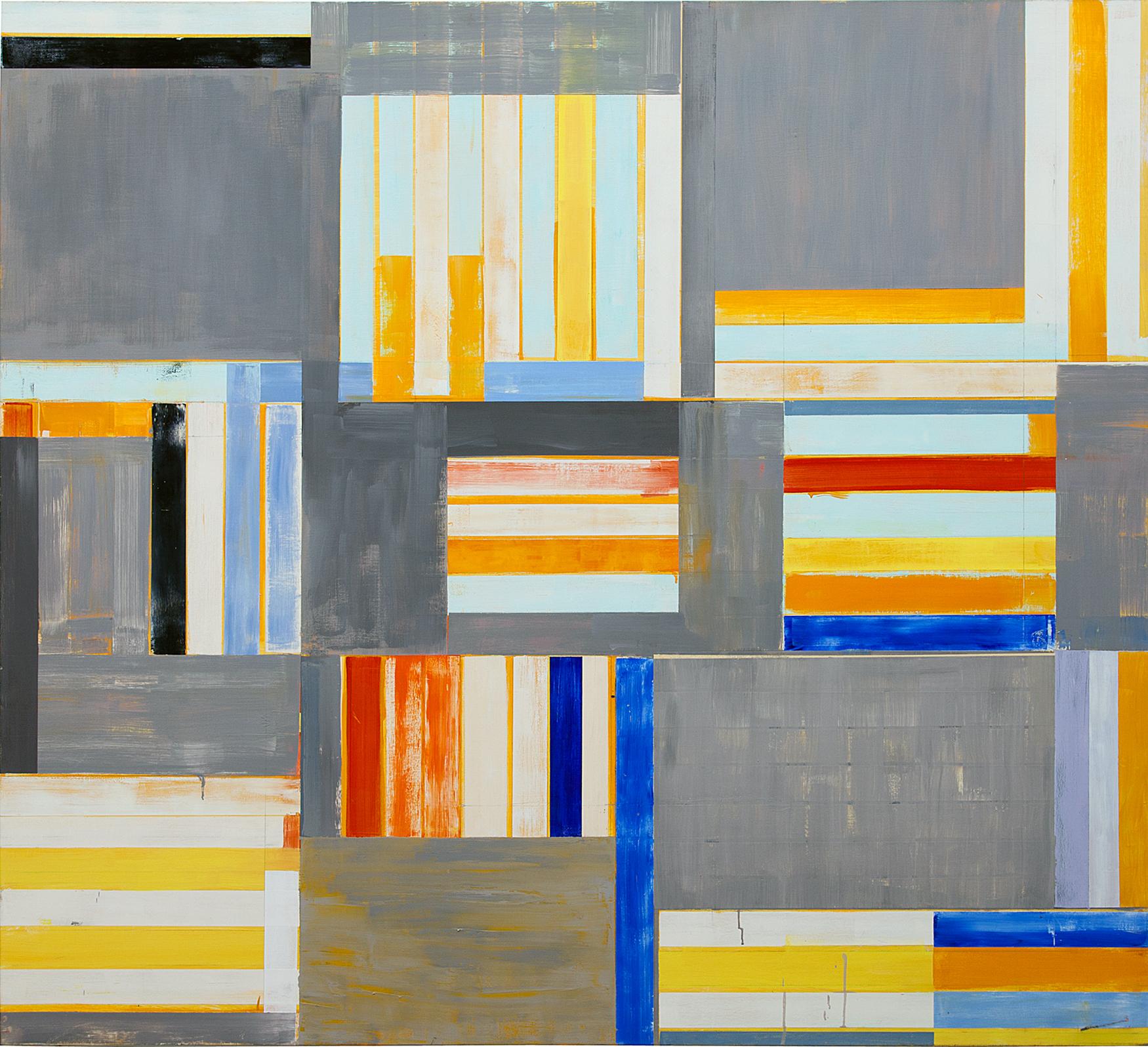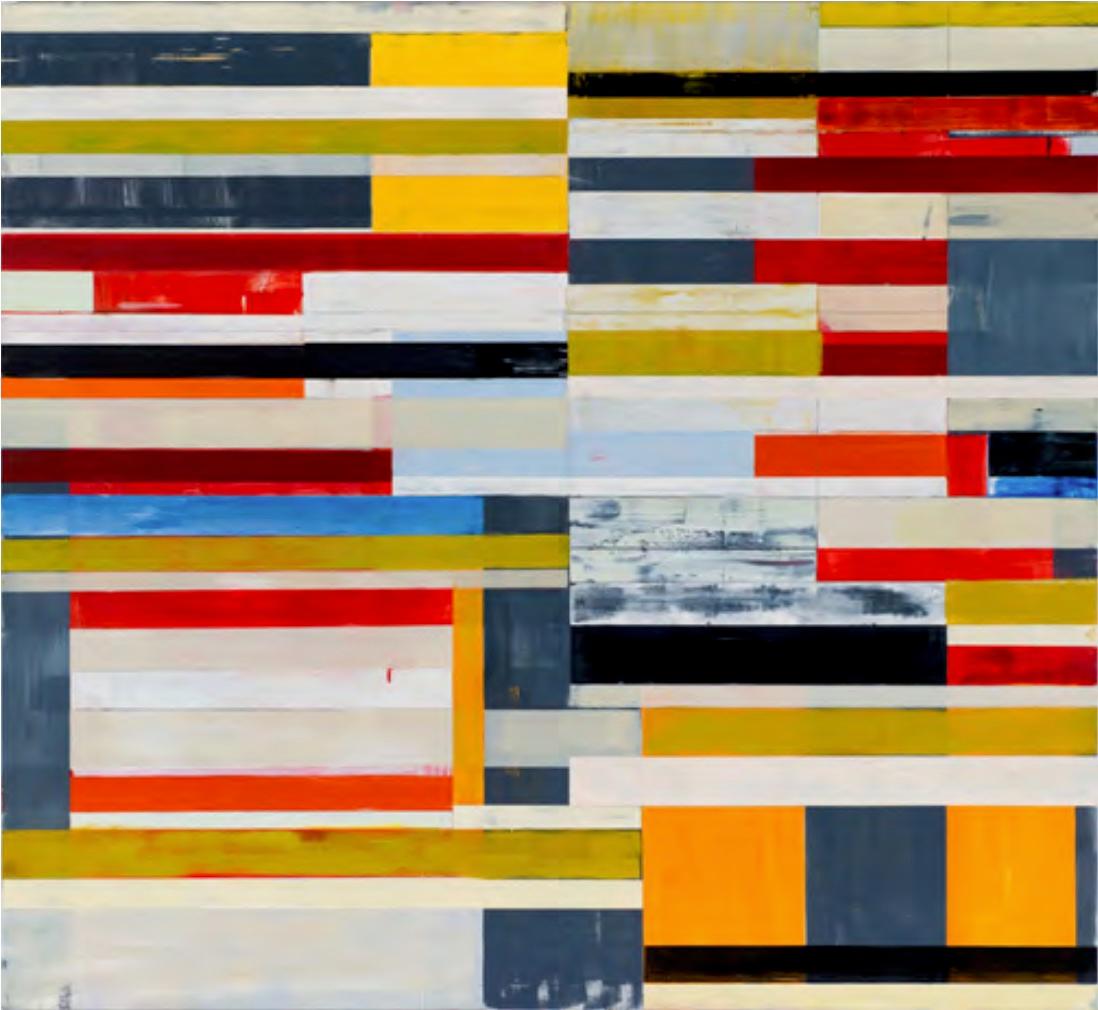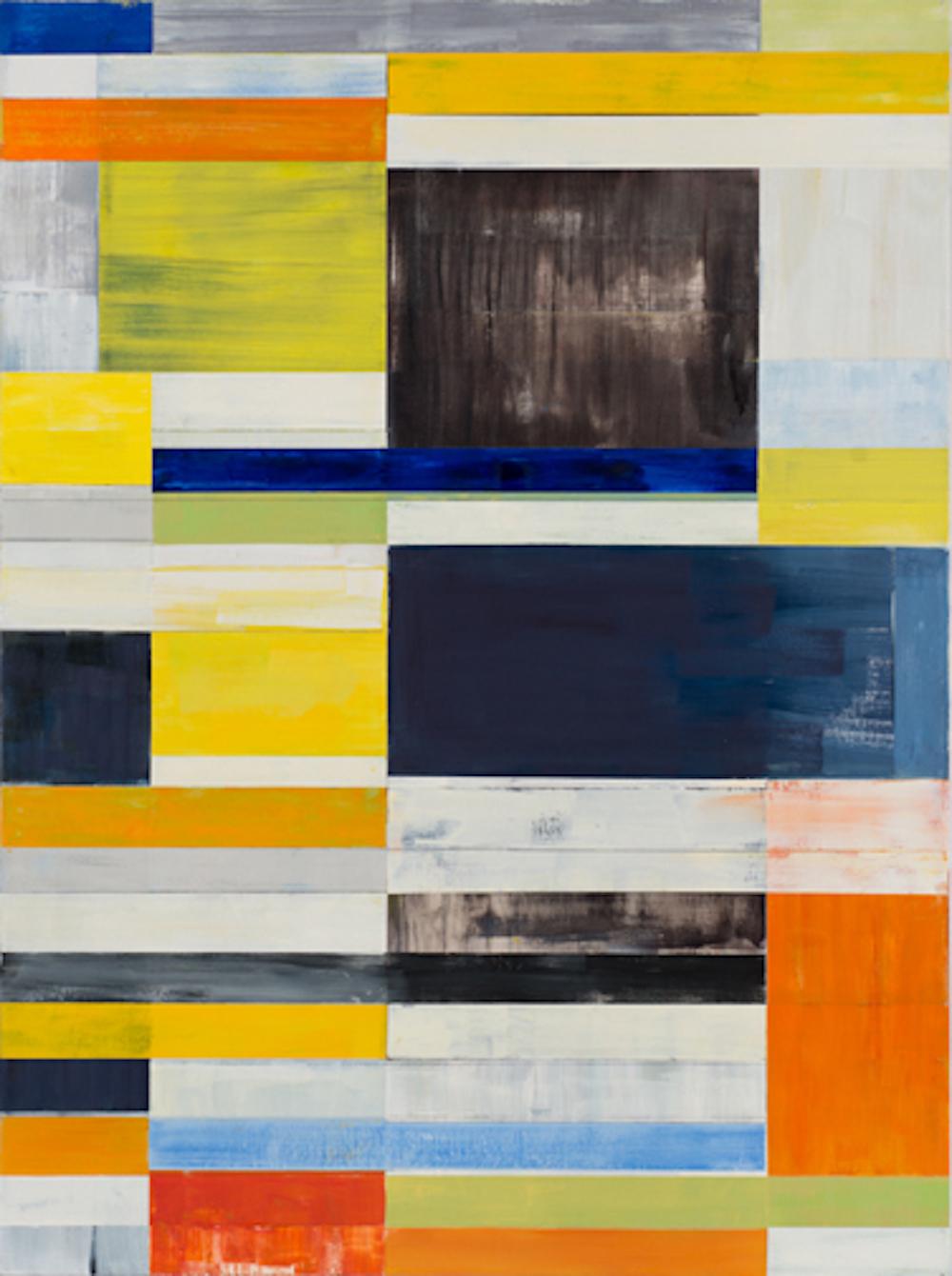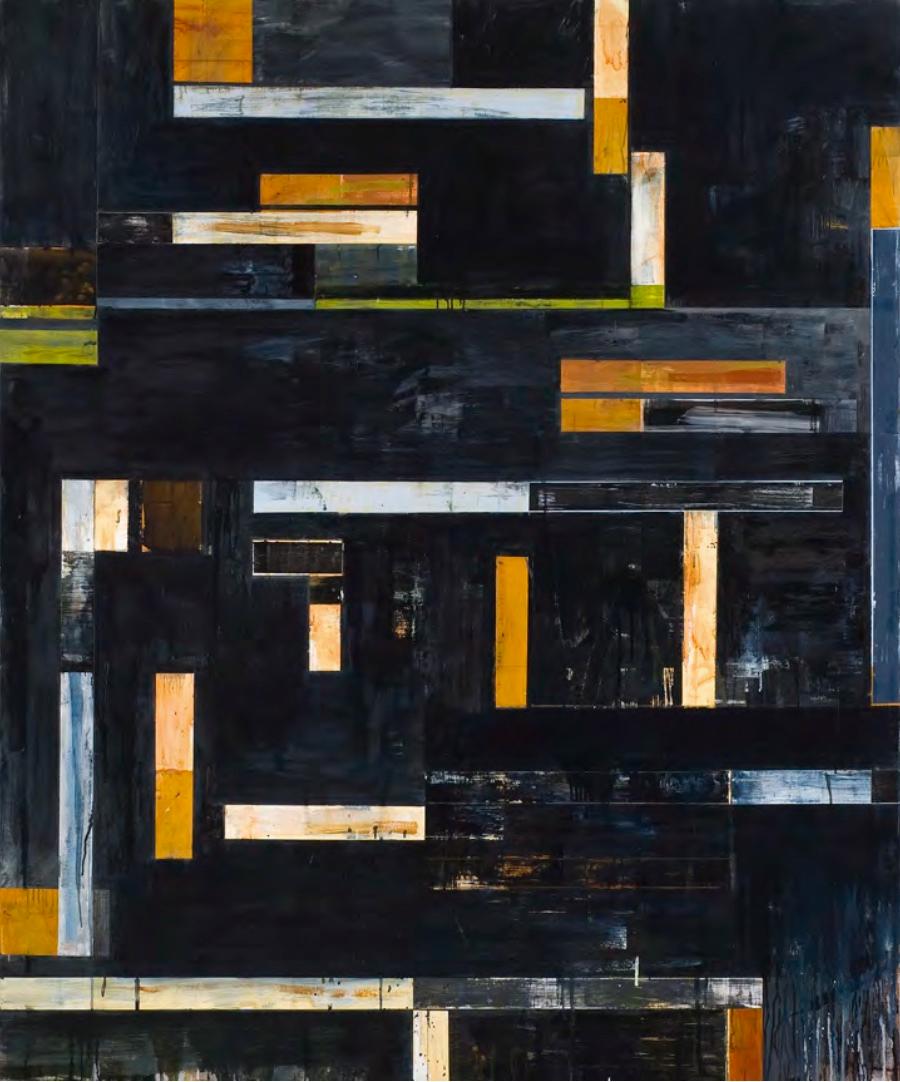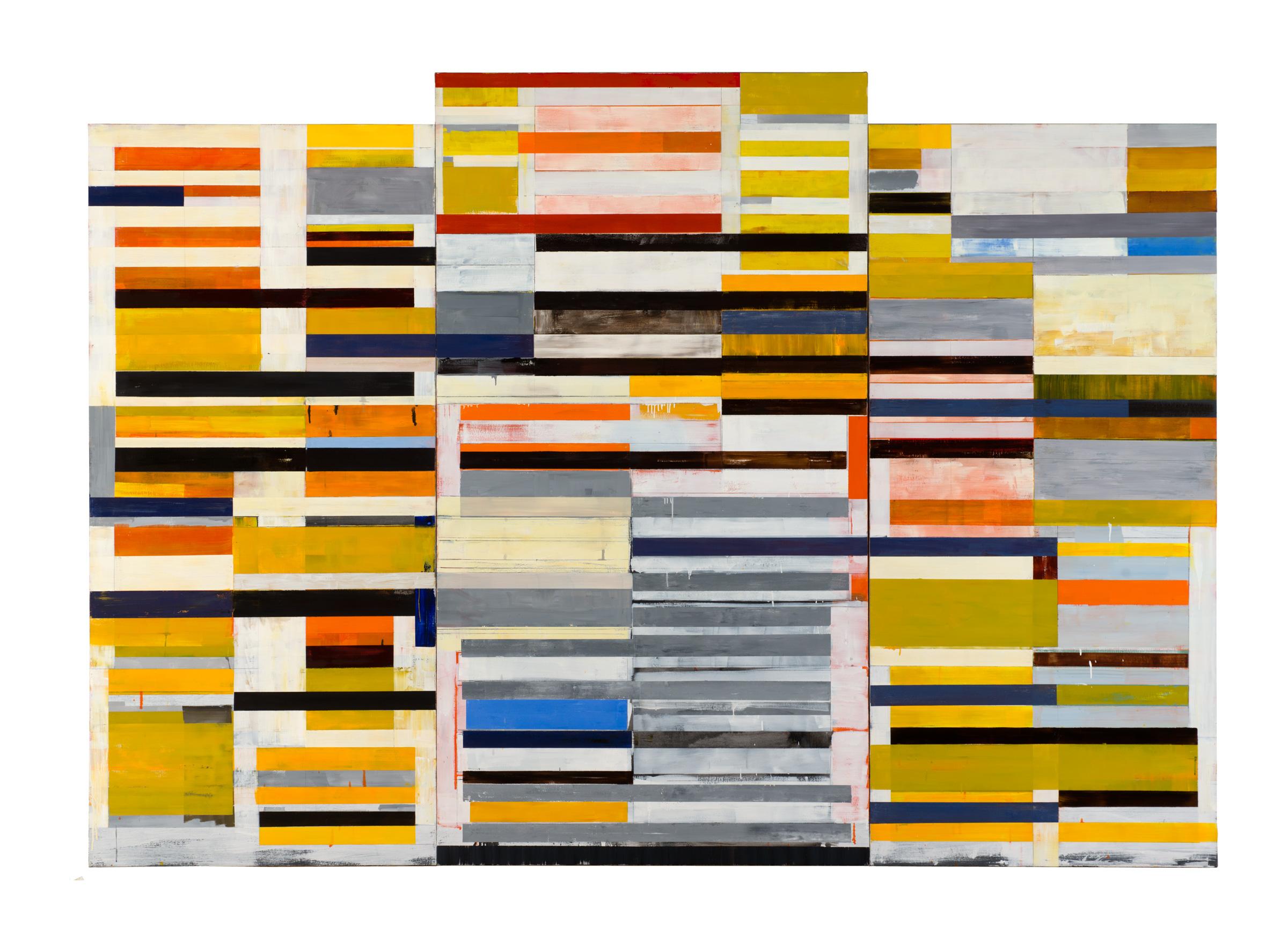Items Similar to Orange Circle
Want more images or videos?
Request additional images or videos from the seller
1 of 6
Paul ReedOrange Circle 1965
1965
About the Item
Signed & dated Verso. 1965
Paul Reed in 1970. He favored “staining” untreated canvas.
Paul Reed, the last surviving member of the Washington Color School, who explored the complexities of color and form in vibrant bio-morphic and hard-edge abstract paintings, died on Sept. 26 at his home in Phoenix. He was 96.
His death was confirmed by his daughter, Jean Reed Roberts.
Mr. Reed acquired his public identity as an artist when he was included, along with Gene Davis, Kenneth Noland, Morris Louis, Thomas Downing and Howard Mehring, in “The Washington Color Painters,” a landmark traveling exhibition that began at the Washington Gallery of Modern Art in 1965.
All of the other painters had been shown, the year before, in “Post-Painterly Abstraction,” a 31-artist exhibition at the Los Angeles County Museum of Art organized by the critic Clement Greenberg in an effort to write a new chapter in the historic march of abstract art.
Like his fellow Washington artists, Mr. Reed rejected the hot, gestural approach of Abstract Expressionism and explored color and abstract forms in a cooler mode. Working with diluted acrylic paint, in discrete series that methodically explored formal issues, he created luminous fields of color by letting the paint bleed into, or stain, untreated canvas.
“I have a saying: Pollock dripped, Frankenthaler poured,” he told The Washington Post in 2011, referring to the artist Helen Frankenthaler. “Morris Louis poured. Howard Mehring sprinkled. I blot.”
In his first stained series, “Mandala,” color radiated from a circular central image. The nearly 100 paintings in his “Disk” series, which he called “a matrix for exploiting color,” consisted of a central circle and two triangles positioned at the corners of the canvas.
Over the next decade he moved to hard-edge geometric zigzags and stripes in the vertical “Upstart” series, color grids and shaped canvases that allowed for more complex experiments in form and color relations. He also made welded steel sculptures and, in the “Quad” series of the 1980s, collaged photographs.
“Reed was, in a sense, the ‘little master’ of that first batch of Washington colorists,” the critic Benjamin Forgey wrote in The Washington Post in 1997. “He was a latecomer — he didn’t turn seriously to painting until he was in his mid-30s — but he never considered becoming anything other than an abstract painter. And when he was ready to show, in his early 40s, he was a very good abstract painter indeed.”
Mr. Reed gave himself a more modest assessment in an interview with NPR last year. “I’m sort of low man on the totem pole of that group of six,” he said.
Paul Allen Reed was born in Washington on March 28, 1919. After graduating from McKinley Technical High School, he studied art for a semester at San Diego State University but, short of money, he returned to Washington to work as a graphic artist at The Times-Herald, taking art classes at the Corcoran School of Art at the same time. He was rejected for military service because of poor hearing.
Mr. Reed worked for a short period as a graphic designer with an advertising agency in New York just as Abstract Expressionism was taking off, but he returned to Washington in the early 1950s and started his own design agency. In 1962 he was hired by the newly established Peace Corps to oversee the design of its publications.
Mr. Reed had his first solo show in 1963 at the Adams-Morgan Gallery in Washington. The same year, in another solo exhibition, he showed his “Satellite Paintings” at the East Hampton Gallery in Manhattan. These were shaped canvases, each with a smaller companion canvas whose single image appeared to have been thrown off by the rotating, flower-like image of the main canvas.
Stuart Preston, reviewing the show for The New York Times, described the works as “an interesting and not unoriginal attempt to develop color dynamics with the curve instead of the safer straight line.”
In 1966 Mr. Reed was included in the exhibition “The Hard-Edged Trend” at the Smithsonian American Art Museum, and in 1971 he was appointed assistant professor at the Corcoran School of Art, where he taught for the next decade.
After his studio building was razed in 1972, Mr. Reed, who leaves no immediate survivors other than his daughter, began working in the basement of his home in Arlington, Va., where he turned to smaller formats, producing oil-pastel drawings, photo collages and gouache paintings on paper.
He began painting on canvas again in the late 1990s, introducing flat, rectangular bars of color that seemed to float over the picture plane.
In 2011 his work was included in “Washington Color and Light” at the Corcoran. His career was surveyed in the exhibitions “Evolution Through Color: The Art of Paul Reed,” at the Charles Marvin Fairchild Memorial Gallery at Georgetown University in 2010, and “Ultraviolet to Infrared: Paul Reed, 50 Years,” at the Workhouse Arts Center in Lorton, Va., in 2011.
In recent years, his work was shown in New York at D. Wigmore Fine Art, which has three early Reed paintings in its current exhibition, “1960s Hard-Edge Painting: L.A., D.C., N.Y.”
Credit: askart
- Creator:Paul Reed (1919, American)
- Creation Year:1965
- Dimensions:Height: 54 in (137.16 cm)Width: 40 in (101.6 cm)Depth: 3 in (7.62 cm)
- Medium:
- Movement & Style:
- Period:
- Condition:
- Gallery Location:Saratoga Springs, NY
- Reference Number:1stDibs: LU17021404093
About the Seller
4.2
Vetted Seller
These experienced sellers undergo a comprehensive evaluation by our team of in-house experts.
Established in 1992
1stDibs seller since 2015
30 sales on 1stDibs
Typical response time: 19 hours
- ShippingRetrieving quote...Ships From: Saratoga Springs, NY
- Return PolicyA return for this item may be initiated within 3 days of delivery.
More From This SellerView All
- Geometric AbstractBy Rolph ScarlettLocated in Saratoga Springs, NYSigned lower right. A major exponent of non-objective painting, Rolph Scarlett's career and artistic philosophy is closely linked with the early history of the Solomon R. Guggenhei...Category
1960s Abstract Geometric Abstract Paintings
MaterialsOil, Canvas
- Geometric AbstractBy Rolph ScarlettLocated in Saratoga Springs, NYSigned lower left. About the artist: Rolph Scarlett was a painter of geometric abstraction during the American avant-garde movement of the 1930s and 1940s. Born in Guelph, Ontario,...Category
1960s Abstract Geometric Abstract Paintings
MaterialsCanvas, Oil
- CubesBy Erik JohnsenLocated in Saratoga Springs, NYSigned & dated 2020 lower right. His father nearly sold 5-year- old Erik Johnsen in 1965 for $600. What followed was a chaotic journey into beatings, sexual abuse and groundlessness...Category
21st Century and Contemporary Abstract Geometric Abstract Paintings
MaterialsAcrylic, Panel
- Geometric CompositionBy Rolph ScarlettLocated in Saratoga Springs, NYRolph Scarlett (Canadian/American, 1889 - 1984) “Geometric Composition” Signed lower right, circa late 1930’s early 1940’s 19 ½ x 26 inches Mixed media, Price on request About Rolph...Category
1930s Abstract Geometric Abstract Paintings
MaterialsMixed Media, Board
- AbstractionBy Agnes HartLocated in Saratoga Springs, NYSigned lower right Agnes Hart was born in Meridan, Connecticut. She studied at the Ringling School of Art in Sarasota, Florida; at Iowa State University with Josef Presser, Paul Burlin and Lucile...Category
1950s Abstract Abstract Paintings
MaterialsSandstone
- The FernBy Agnes HartLocated in Saratoga Springs, NYSigned lower right Agnes Hart was born in Meridan, Connecticut. She studied at the Ringling School of Art in Sarasota, Florida; at Iowa State University with Josef Presser, Paul Burlin and Lucile...Category
1940s Abstract Expressionist Abstract Paintings
MaterialsCanvas, Oil
You May Also Like
- Folio 8, Oil on Canvas, 2016By Lloyd MartinLocated in Boston, MAArtist: Lloyd Martin Title: Folio 8 Size: 66 x 72” Year: 2016 American artist Lloyd Martin, known internationally for his rhythmically constructed abstract painting, continues his e...Category
21st Century and Contemporary Abstract Geometric Abstract Paintings
MaterialsCanvas, Oil
- Carbon, Oil on Canvas, 2014By Lloyd MartinLocated in Boston, MAArtist: Lloyd Martin Title: Carbon Medium: Oil on Canvas Size: 66 x 72 inches Year: 2014 American artist Lloyd Martin, known internationally for his rhyt...Category
21st Century and Contemporary Abstract Geometric Abstract Paintings
MaterialsCanvas, Oil
- Indigo Check, Oil on Canvas, 2014By Lloyd MartinLocated in Boston, MAArtist: Lloyd Martin Title: Indigo check Size: 60 x 44” Year: 2014 American artist Lloyd Martin, known internationally for his rhythmically constructed abstract painting, continues ...Category
21st Century and Contemporary Abstract Geometric Abstract Paintings
MaterialsCanvas, Oil
- Crawl, Oil on Canvas, 2013By Lloyd MartinLocated in Boston, MAArtist: Lloyd Martin Title: Crawl Medium: Oil on Canvas Size: 72 x 60 inches Year: 2013 American artist Lloyd Martin, known internationally for his rhyth...Category
21st Century and Contemporary Abstract Geometric Abstract Paintings
MaterialsCanvas, Oil
- Large Alloy, Oil on Canvas, 2013By Lloyd MartinLocated in Boston, MAArtist: Lloyd Martin Title: Large Alloy Size: 92 x 130” Year: 2013 American artist Lloyd Martin, known internationally for his rhythmically constructed abstract painting, continues ...Category
21st Century and Contemporary Abstract Geometric Abstract Paintings
MaterialsCanvas, Oil
- Mid-Century Modern Abstract Oil PaintingLocated in Fredericksburg, VASigned lower right. This Mid Century Modern artist, Malcom Edgar Case (1924-1984), is known for abstract figurative painting and clothing design. Th...Category
Mid-20th Century Abstract Geometric Abstract Paintings
MaterialsCanvas, Oil
Recently Viewed
View AllMore Ways To Browse
Orange Bar
Vintage Circle
Retro Orange Art
Circle Modern
Orange 1970
Orange Photograph
Circle Abstract Art
Abstract Circles
Vintage Circle Design
Orange Los Angeles
Geometric Circle Art
Modern Art Painting Circles
Modern Circle Light
Geometric Art With Circles
Geometric Orange Art
Dior Orange
Geometric Circle Abstract Art
Abstract Geometric Circle
